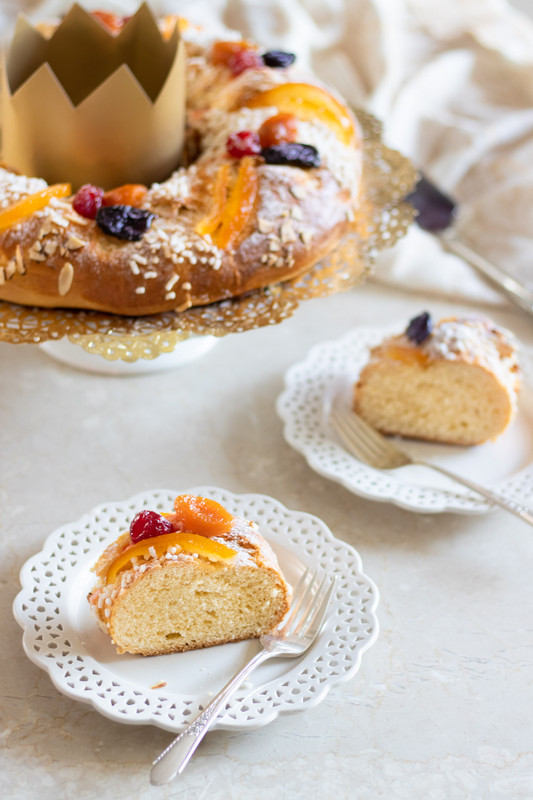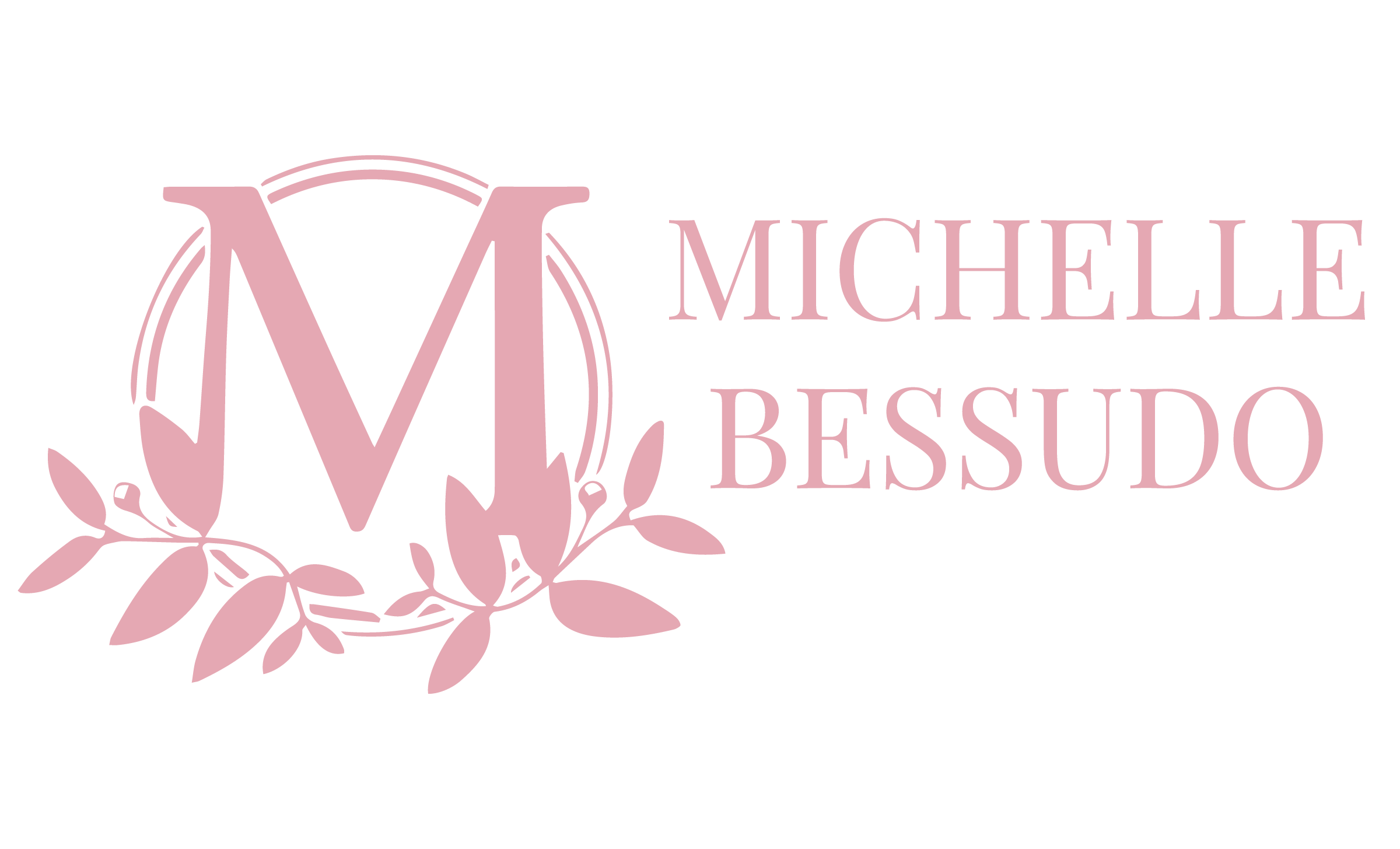Roscón de Reyes: Spanish King Cake
Roscón de Reyes or Spanish King cake is a delicate brioche-like bread flavored with orange blossom water and dotted with festive candied or dried fruit. It’s a sweet bread that is perfect for brunch and dunked in coffee or hot chocolate Roscón de Reyes is short of heaven. King cake is a relief from the spice-heavy, but also delicious, breads, cookies, and cakes we have been gorging on for the past couple of weeks, here’s looking at you gingerbread.
Ever present on Spanish tables during the Epiphany celebration – the 6th of January – Roscón de Reyes is sometimes viewed as Spanish and Latin as our emblematic Ñ as in ESPAÑA, yet despite how deeply rooted in Spanish and Latin culture this delicious bread seems to be, and how Christian in name implies it is, truth be told King cake actually hides a very pagan origin.
To uncover its origin we must travel back to the Roman Republic, more concretely to the 2nd century before Christ. Romans were a particularly pious people, with over a 3rd of their calendar devoted to sacred holidays. But out of all those days consecrated to the gods, few were met with as much enthusiasm as Saturnalia.
Saturnalia was a week-long celebration dedicated to Saturn, god of agriculture and harvests. The festival would officially kick off on the 17th of December, once all the winter sowing was and field work was finalized, which allowed both peasants and slaves alike to kick up their boots and relax until spring.
During Saturnalia, masters and employers would throw a large and lavish dinner party for their serfs and slaves. There would be presents handed out to ALL attendees and roles would be reversed; masters would serve those who served him during the year. This was, without a doubt one of the favorite Roman holidays of the populace, so much so that the State tried, unsuccessfully might I add, to constrain the merrymaking to 3 to 5 days. But the truth is Romans would celebrate for well over the State allotted time.
Candles, torches, and lanterns would decorate homes and public places, much like our Christmas lights today. Lights would ward off darkness during the last darkest days of the year, just in time for another holy Holiday, with which Saturnalia would eventually blend with; “Natalis Invicti” celebrated on the 25 of December. This festival also called “Dies Natalis Solis Invicti” would celebrate the birth of the late Roman god Sol Invictus, the Unconquered Sun.
Many speculations have been made around the effect of Natalis Invicti over Christmas, and these go as far back as the 12th century. Many scholars agree that it might well be possible that early Christians chose the 25th of December as the birth date of Christ because of this already popular Holiday. In fact, the cult of Sol Invictus as a whole crosses over in many aspects with early Christian cult. The solar religion was so widespread and so closely related with the Christian community that Augustine found it pertinent to preach to the sun god's worshipers and against the cult encroaching upon his community.
But I digress.
Among the many dishes prepared for Saturnalia was an ever so popular sweet bread made with eggs, oil, and honey, dotted with nuts, dates, and figs. One of the peculiarities of this bread is that hidden inside its delicious dough was a dried broad bean. The lucky diner who found it in his slice would be crowned King of Kings for the day. The auspicious broad bean was also expected to bring prosperity for the year to come to the new “king”. A lucky vegetable omen if you will.
The fact that one lucky diner would become King for a day is actually where the name King Cake or Roscón de Reyes comes from, and not from the Three Wise Men (or the Three Kings). When Rome became Christian around the 4th century AD it did what it had been doing for centuries before, it turned to religious syncretism and instead of banning a pagan tradition it was wisely turned it around and became a staple of Epiphany. It was a moment of “If you can’t beat them join them” or sorts. That’s WHY we find all sorts of variations of the same bread all over the Mediterranean which in turn was exported to the New World, North, and South.
The advent of the Middle Ages and a more disciplined and cohesive form of Christianity radically changed the way people ate. Catholicism advised Christians on how and what to eat. Feasting and enjoying food was as important back then as fasting and abstinence. During abstinence days all meats and dairy were forbidden, in fact, most people followed an absolutely vegan diet for almost 35% of the year. Almond milk subbed animal milk and oils were cleverly used instead of butter.
During Epiphany and Shrove Tuesday, also called Mardi Gras which literally means Fat Tuesday in French, or Carnaval Tuesday all meats and dairies were allowed. In fact, the word Carnaval actually derives from Carne latin for meat and levare latin for taking something away, as this was the last day that meats and dairy were allowed.
While the food penitence is not observed today, many of our gastronomical traditions stem from this medieval practice. So now you know why pancakes are all the rage come late February and early March, the same holds true for why we are so used to eating all sorts of cakes and sweets in winter, especially after Christmas. Come spring we all tend to regret it.
Anyways just remember this rambling next time you go out partying on Mardi Gras!

Roscón de Reyes: Spanish King Cake
Roscón de Reyes or Spanish King cake is a delicate brioche-like bread flavored with orange blossom water and dotted with festive candied or dried fruit. It’s a sweet bread that is perfect for brunch and dunked in coffee or hot chocolate Roscón de Reyes is short of heaven.
ingredients:
- 500 g (4 cups) flour
- 10 g (3 tsp) Instant dry yeast
- 3 large eggs slightly beaten
- 1 tsp salt
- 2 tbsp orange blossom water
- 100 g (8 tbsp)warm milk
- 100 g (1/2 cup) sugar
- 100 g (1/2 cup) butter
- candied or dried fruit to taste
- slivered almonds
- powdered and granulated sugar for dusting
- 1 dried fava bean o a small trinket
instructions:
- Sprinkle yeast and a tablespoon of sugar into milk and let sit until double in volume
- Add all ingredients except fruits, powdered sugar, and fava bean or trinket into a mixer bowl.
- Knead all ingredients together either by hand or with the help of a mixer until a soft but firm ball is formed. About 5-10 min
- Allow dough to proof in a warm place until double in size
- Punch air out of dough and shape into a large doughnut and place in a baking sheet.
- Let proof for 30 min or until double in size.
- Lightly brush egg wash and place fruits in your desired fashion, sprinkle with granulated sugar
- Bake for 30 min in a 350° oven or until golden brown
- Allow bread to cool and hide trinket or fava bean inside.
- Decorate with powdered sugar and a paper crown.
Tag @michellebessudo on Instagram and hashtag it #michellebessudo so I can share it with the world!








